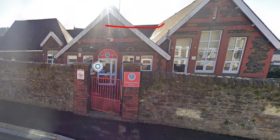Historic Anglesey workhouse in planning conversion to holiday lets

A stay in a Victorian workhouse on Anglesey was no happy break for its unfortunate and destitute inmates. But now the former institutional building near Llanerchymedd, which housed beggars, orphans, TB and influenza victims, and with its cells and a separate annexe for vagrants, could be turned into luxury holiday accommodation if plans are agreed.
Proposals to convert the old Bryn Hafod site – used more recently as Anglesey County Council offices before the site fell into private hands – into a holiday spot have now been put forward. The council has recently promoted moves to reduce second and holiday homes amid efforts to protect local housing stocks and the Welsh language.
However, its planning department must now consider a full application for the conversion and extension of one of its old properties into four holiday apartments and one staff apartment. The plans also include conversion of an outbuilding into a holiday cottage, demolition of an outbuilding and erection of a new cafe/bar together with the siting of five holiday lodges and associated development.
The proposals concern a 7500.00 square, triangular site, off Amlwch Road, the B5111. A landscape report within the plans, prepared by Tirlun Barr Associates, dates the historic workhouse to the 1880s.
But Anglesey Archives told the Local Democracy Reporting Service,there were poor law records held for the area dating back as far as 1838. It is believed the workhouse building was begun in 1867 and completed in 1869.
The earliest known registered admission at the workhouse, held at the archives in Llangefni, is in an admissions book and refers to 1888. The notoriously harsh workhouse system was intended to provide only the most basic shelter and work for the poorest in society who had no means of support.
According to a Victorian Workhouse article by Jessica Brain, on the Historic UK website: “With the advent of the Poor Law system, Victorian workhouses, designed to deal with the issue of pauperism, in fact became prison systems detaining the most vulnerable in society.”
A larger pre-application advice application plan at the site, mooted to planners, had raised planners’ concerns over size and impact. But a design and access statement, with a scaled down application claimed the latest “proposal will attract tourists and would provide year round employment for local people without harming the natural environment.”
The application also states the development could provide two full – time and six part time roles. “The proposal will result in year round tourist spend,” the Town Planning document states.
It adds “without viable development the main former workhouse building would deteriorate further.” It also cites the development “…could also increase the range of facilities open to local people.”
A drainage strategy report by ALI Building design, describes the historic site buildings. They include the main workhouse building, a TB hospital, Influenza hospital, two staff cottages, the workhouse tramps’ stone breaking block and a static caravan.
It also describes the sites three access point but points to use of “one main access maintained off the highway with the other two closed and inaccessible.”
By BBC LDRS
Spotted something? Got a story? Email News@News.Wales
















